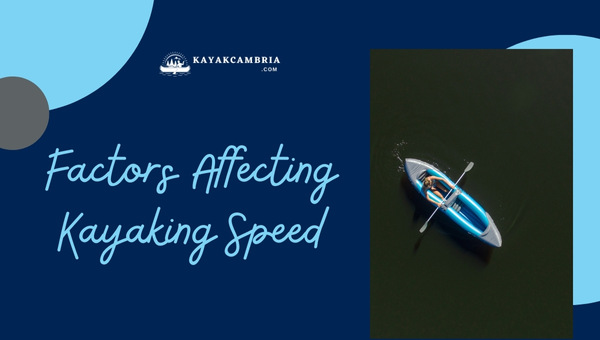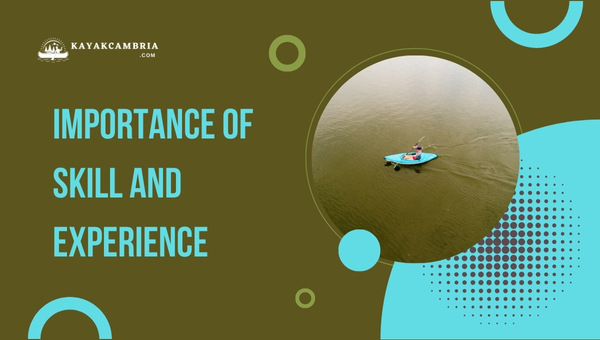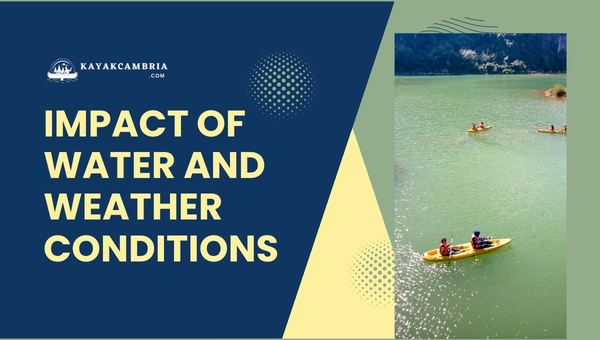When I’m out on the water, one question I often hear is, “How long does it take to kayak a mile?” It’s a great question, as paddling time can vary significantly depending on the paddler’s experience, the water conditions, and the type of kayak being used.
The average time it takes for a beginner kayaker to cover a mile might be around 20 to 30 minutes. For a more experienced kayaker, it might take about 15 to 20 minutes. Keep in mind that these are rough estimates, and individual times can differ depending on factors like weather, currents, and the paddler’s own fitness level.
In certain cases, such as when you’re paddling against a strong current or in choppy waters, it could take significantly longer to kayak a mile. Always plan accordingly and consider factors like fatigue, weather, and potential hazards while estimating your trip duration.
Contents
Contents
Factors Affecting Kayaking Speed
When considering how long it takes to kayak a mile, it’s essential to recognize that numerous factors can significantly impact the time it takes. In this section, I’ll share some critical variables that affect kayaking speed and, consequently, the duration it would take to cover a mile.

1. Paddler’s experience and physical fitness
A seasoned kayaker with excellent physical strength and endurance can cover a mile much faster than a beginner or someone with poor fitness levels. On average, a beginner might paddle at a speed of about 2 to 3 mph while an experienced paddler could reach speeds of 4 to 6 mph.
2. Kayak type and design
The type and design of a kayak play a major role in the speed and efficiency of paddling. Some factors include:
- Hull shape: Kayaks with longer and narrower hulls are usually faster than those with shorter and wider hulls.
- Weight and materials: Lightweight materials such as carbon fiber or fiberglass often allow for more agile and faster kayaks compared to heavier materials like plastic and aluminum.
3. Current, tide, and wind conditions
The water and weather conditions can either positively or negatively impact the time it takes to kayak a mile. Tailwinds, helpful currents, and ebbing tides will speed up the journey, while headwinds, adverse currents, and incoming tides can slow progress significantly.
4. Water type and course
Lake and river conditions can vary greatly, affecting kayaking speed. In calmer waters (e.g., a lake), maintaining a consistent speed and direction is generally simpler. On the other hand, rivers with rapids bends, and obstacles will require more skill and maneuvering, leading to slower progress.
Given these factors, it’s essential to keep in mind that how long it takes to kayak a mile greatly depends on individual circumstances.
By understanding these factors and being mindful of how they influence the time it takes to kayak a mile, you can better plan and optimize your kayaking experience.
Importance Of Skill And Experience

Paddling speed can vary significantly based on one’s expertise, technique, and knowledge of kayaking. In this section, I’ll delve into factors that influence the time it takes to kayak a mile and how skill and experience play a significant part.
Firstly, a novice kayaker might take longer to cover a mile compared to a seasoned paddler. Beginners tend to have less efficient strokes, which affects their overall speed. On average, a beginner kayaker might take around 30 to 40 minutes to cover a mile at a typical paddling speed of 2 to 2.5 miles per hour. In contrast, experienced kayakers can achieve speeds of up to 4 to 5 miles per hour – allowing them to cover a mile in about 12 to 15 minutes.
Factors affecting kayaking speed include:
- Paddling technique
- Physical fitness
- Boat type and design
- Water conditions
Improving one’s paddling technique is a key aspect of increasing kayaking speed. The proper technique not only makes paddling more effective but also helps conserve energy. Lessons from experienced instructors or joining kayaking clubs can provide valuable guidance on perfecting your stroke.
Physical fitness also plays a vital role in kayaking speed. The stronger and better-conditioned you are, the faster you’ll be able to paddle. Incorporating resistance training and cardiovascular exercises into your workout routine can greatly benefit your kayaking performance.
Knowing your kayak and its design features can help increase your speed on the water as well. Different boat types are designed for varying purposes; some are built for speed and performance, while others prioritize stability and comfort. Understanding your own kayak’s capabilities and limitations is crucial in enhancing your efficiency on the water.
Lastly, always be mindful of water conditions, as they can greatly impact your kayaking speed. Whether you’re paddling on calm, flat water or battling currents and waves, adjusting your technique and equipment to accommodate the conditions will help you navigate more effectively and safely.
Answering “How long does it take to kayak a mile” greatly depends on one’s skill and experience. By continually working on your technique, physical fitness, and knowledge of your equipment and water conditions, you can significantly improve your kayaking speed and the time it takes to cover a mile. So, whether you’re racing or leisurely exploring the great outdoors, honing your skills is vital in making the most out of your kayaking adventures.
Impact Of Water And Weather Conditions

While kayaking, it’s essential to account for the impact of water and weather conditions. These factors can significantly influence your overall speed and consequently the time it takes to cover a mile. In this section, I’ll discuss some of the major factors to consider.
- Current and Tides: When kayaking in rivers or along the coastline, the water current and tides can either help or hinder your progress. If you’re kayaking with the current, it can significantly decrease the time it takes to paddle a mile. However, going against the current will slow you down and inevitably increase your time.
- Wind Speed and Direction: Wind plays a crucial role in determining your kayaking speed. A tailwind can push you along and increase your speed, while a headwind can slow you down. It’s important to monitor the wind conditions and adjust your route and paddling technique accordingly.
- Water Temperature: Although not directly related to your speed, water temperature can affect your ability to paddle efficiently. Cold water can cause your muscles to fatigue quicker, making it challenging to maintain a steady pace.
Weather conditions, such as rain and visibility, can also impact your paddling experience. Rain or fog can decrease visibility, making it difficult to navigate and potentially posing unexpected obstacles.
Below is a table summarizing the average speed and time it may take to kayak a mile under varying conditions:
| Condition | Speed (mph) | Time (minutes) |
| Calm water | 3 | 20 |
| Moderate current | 4 | 15 |
| Strong current | 5+ | 12 or less |
| Headwind | 2 | 30 |
| Tailwind | 4 | 15 |
Keep in mind that these numbers are just an estimation and can vary based on a kayaker’s skill level, kayak type, and other factors.
The time it takes to kayak a mile can be significantly impacted by water and weather conditions. It’s crucial to research your route and check the forecast before embarking on a kayaking adventure. Planning ahead and understanding how these factors play a role will help you estimate the time it’ll take to cover a mile, and ensure a safe and enjoyable experience.
Conclusion
So, how long does it take to kayak a mile? The time it takes to kayak a mile can be influenced by several factors, including the paddler’s skill level, kayak type, weather and water conditions, and physical fitness. Keeping these factors in mind, I’ve provided a general overview of kayaking speeds and how they may relate to your specific situation.
| Skill Level | Average Speed (mph) | Time to Kayak 1 Mile |
| Beginner | 2 – 2.5 | 25 – 30 minutes |
| Intermediate | 3 – 3.5 | 17 – 20 minutes |
| Advanced | 4 – 5 | 12 – 15 minutes |
Please remember that these are just average estimates. Here’s a quick summary of the factors to consider when estimating your own paddling speed:
- Paddler’s skill level:
- Beginner: If you’re new to kayaking, you’ll likely paddle at a slower pace as you get used to your kayak and technique.
- Intermediate: Once you’re comfortable in the kayak, you’ll be able to maintain a more consistent pace, covering more distance in less time.
- Advanced: Experienced kayakers can achieve higher speeds and maintain them for longer periods.
- Kayak type:
- Recreational kayaks: Wider and more stable, usually resulting in slower speeds.
- Touring kayaks: Designed for longer trips and often feature a longer, slimmer design, providing better speed.
- Racing kayaks: Built for high speed and performance, offering the fastest potential paddling speeds.
- Weather and water conditions: Tailwinds and calm water can help you paddle faster, while strong winds and choppy waters can slow you down or make it more challenging.
- Physical fitness: The fitter and stronger you are, the more efficient your paddling will be and the faster you’ll be able to cover that mile.
It’s important to remember that kayaking is not just about speed and covering distance. Enjoy the outdoors, take in the beauty of your surroundings, and have fun exploring the water. Tailoring your expectations and kayaking experience to your skill level and comfort will make your adventure all the more enjoyable. Now that you know how long it might take to kayak a mile, it’s time to get out there and give it a try!

